M
I
C
R
O
S
T
O
R
Y
O
F
A
R
T
........................................................

NOW COMPLETED:

........................................................
MICROSTORY OF ART
ONLINE JOURNAL FOR ART, CONNOISSEURSHIP
AND CULTURAL JOURNALISM
........................................................
INDEX | PINBOARD | MICROSTORIES |
FEATURES | SPECIAL EDITIONS |
HISTORY AND THEORY OF ATTRIBUTION |
ETHNOGRAPHY OF CONNOISSEURSHIP |
SEARCH

........................................................



 >MICROSTORIES
>MICROSTORIES
- Richard Serra
- Martin Scorsese
- Claude Simon
- Sunshine
- Werner Herzog
- The Creation
- Marcel Duchamp
- Nino Rota
- Wölfflin and Woolf
- Hansjörg Schneider
- Kraftort Arkadien
- Visual Biography
- Schlaraffenleben
- Die Geisteswissenschaften
- The Voyeur
- Buzzword Sustainability
- Paul Verlaine
- Tao Yuanming
- New Beginning
- Seneca
- Still Lifes
- Charles Baudelaire
- Frédéric Chopin
- The Art History of Sustainability
- Wang Wei
- Solarpunk
- Historians of Light
- Lepanto
- Renaturalization
- Plates
- Snow in Provence
- Learning to See
- Picasso Dictionaries
- Peach Blossom Spring
- Picasso Tourism
- Tipping Points
- Sviatoslav Richter
- Weather Reports
- Treasure Hunt
- Another Snowscape in Picasso
- Picasso in 2023
- Dragon Veins
- The Gloomy Day
- The Art of the Pentimento
- Reforestation
- The Status of Painting
- Emergency Supply
- Punctuality
- Watching Traffic
- Zhong Kui
- How Painting Survived the 1990s
- Confirmation Bias
- Sustainability and Luxury
- Garage Bands
- Picasso and Artificial Intelligence
- Eyes of Tomorrow
- Picasso in 2023 2
- Gluing Oneself to Something
- Suburbia
- Bamboo
- Sustainability and Carpe Diem 1
- Interviews with Bruegel
- Sustainability and Carpe Diem 2
- Coffee & Sugar
- Bamboo 2
- Picasso in 2023 3
- Sustainability and Carpe Diem 3
- Cherry Orchard
- Old Magazines
- Chance
- Nick Drake
- Harlequin
- The Smartphone & the Art Book
- Atlas Syndrome
- The Kitchen
- Atlas Syndrome 2
- Consideration
- Tori Amos
- School
- Orchard Auctioning Day
- The Hundred Years’ War
- Sócrates
- Chameleon
- Nefertiti Bust
- Picasso as a Computer
- Sunflowers
- Philemon & Baucis
- Ode to the Radio
- Childhood
- Wimmelbild
- Restitution
- Nick Drake 2
- Wishful Thinking
- Sundays
- The Independent Scholar
- September
- The Fisherman by Pirosmani
- Microadventure
- Sociology
- Salvator Mundi
- Chillon
- Appassionata
- Amber
- Homer
- Berlin
- Planet Walk
- Improvisation
- Seeing Picasso
- These Nice Kids
- Robber
- The One
- The Sea Turtle
- Zoo
- Through the Hush
- Wunderkammer
- I Do Not Seek, I Find
- Shopping Mall
- Food Hamper
- The Secretary
- This Gate
- Nor Rainy Day
- House on a Hill
- Beautiful Island
- Second-hand Bookstore
- Flat
- Slap in the Face
- Serra, Wenkenpark
- Apologies
- The Bells
- Nordmann Fir
- Picasso Wanting To Be Poor
- Picasso, Pirosmani
- A Brief History of Sculpture
- 24 Sunsets
- Rusty Phoenix
- Glove
- Wintry Stanza
- A Song
- Like A Beatle
- Catching An Orange
- Solar Bees
- Permaculture

 >FEATURES
>FEATURES
- Van Gogh On Connoisseurship
- Two Museum’s Men
- Ende Pintrix and the City in Flames
- Titian, Leonardo and the Blue Hour
- The Man with the Golden Helmet: a documentation
- Un Jury d’admission à l’expertise
- Learning to See in Hitler’s Munich
- Leonardo da Vinci and Switzerland
- The Blue Hour Continued
- The Blue Hour in Louis Malle
- Kafka in the Blue Hour
- Blue Matisse
- Blue Hours of Hamburg and LA
- A Brief History of the Cranberry
- The Other Liberale in the House
- The Blue Hour in Raphael
- Who Did Invent the Blue Hour?
- Monet on Sustainability
- Velázquez and Sustainability
- The Blue Hour in Guillaume Apollinaire
- Van Gogh on Sustainability
- The Blue Hour in Marcel Proust
- Picasso and Sustainability
- The Contemporary Blue Hour
- The Blue Hour in 1492
- The Blue Hour in Hopper and Rothko
- Hopper and Sustainability
- The Blue Hour in Ecotopia
- The Hour Blue in Joan Mitchell
- Explaining the Twilight
- The Twilight of Thaw
- The Blue Hour in Pierre Bonnard
- Explaining the Twilight 2
- Picasso on Stalin
- Rubens on Sustainability
- The Salvator Mundi in Bruegel and Rubens
- The Blue Hour in Leonardo da Vinci and Poussin
- The Blue Hour in Rimbaud
- Faking the Dawn
- Frost and Thaw in Ilya Ehrenburg
- Picasso, Stalin, Beria
- Picasso, Solzhenitsyn and the Gulag
- Shostakovich on Picasso
- Hélène Parmelin in 1956
- Historians of Picasso Blue
- Picasso Travelling to Moscow 1
- The Blue Hour in Caravaggio
- Picasso Travelling to Moscow 2
- Picasso, the Knife Game and the Unsettling in Art
- Some Notes on Leonardo da Vinci and Slavery
- Picasso Moving to the Swiss Goldcoast
- The Blue Hour in Camus
- The Blue Hour in Symbolism and Surrealism
- Caspar David Friedrich in His Element
- Exhibiting the Northern Light
- Caspar David Friedrich in His Element 2
- Robert Schumann and the History of the Nocturne
- The Blue Hour in Robert Schumann
- Caspar David Friedrich and Sustainability
- The Twilight of Thaw 2
- Multicultural Twilight
- The Blue Hour in Anton Chekhov
- The Blue Hour in Medieval Art
- Twilight Photography
- The Blue Hour in Bob Dylan
- Iconography of Optimism

 >SPECIAL EDITIONS
>SPECIAL EDITIONS
- Visions of Cosmopolis
- Mona Lisa Landscapes
- Turner and Ruskin at Rheinfelden
- Painters On TV & On TV
- Spazzacamini in Art
- A Last Glance at Le Jardin de Daubigny
- The Experimental Cicerone
- A Dictionary of Imaginary Art Historical Works
- Iconography of Blogging
- Begegnung auf dem Münsterplatz
- Cecom
- Das Projekt Visual Apprenticeship
- Those Who See More
- A Fox on Seeing with the Heart
- Sammlung Werner Weisbach
- Daubigny Revisited
- Some Salvator Mundi Microstories
- Some Salvator Mundi Afterthougths
- Some Salvator Mundi Variations
- Some Salvator Mundi Revisions
- A Salvator Mundi Questionnaire
- A Salvator Mundi Puzzle
- Unknown Melzi
- Francis I and the Crown of Charlemagne
- From Amboise to Fontainebleau
- Drones Above Chambord
- Looking Back At Conques
- Flaubert At Fontainebleau
- Images of Imperial Ideology
- The Chronicles of Santa Maria delle Grazie
- Seeing Right Through Someone
- Melzi the Secretary
- Eying Glass
- A Foil to the Mona Lisa
- A Renaissance of the Cartoon
- Sketching a Family Tree
- Venetian Variations
- A Brief History of Digital Restoring
- A Consortium of Painters
- Leonardeschi and Landscape
- A Christ in Profile
- Learning to See in Spanish Milan
- A History of Gestures
- Leonardo and Josquin
- A Renaissance of the Hybrid
- Suida and Heydenreich
- The Watershed
- Three Veils
- From Beginning to End
- Connoisseurship of AI
- Twilight and Enlightenment
- The Blue Hour in Chinese Painting
- Dusk and Dawn at La Californie
- Iconography of Sustainability
- The Blue Hour in Goethe and Stendhal
- The Sky in Verlaine
- The Blue Hour in Paul Klee
- Iconography of Sustainability 2
- The Blue Hour in Charles Baudelaire
- From Bruegel to Solarpunk
- Some Salvator Mundi Documentaries
- Some More Salvator Mundi Monkey Business
- The Windsor Sleeve
- Brigitte Bardot’s Encounter with Picasso
- Art Historians and Historians
- A Salvator Mundi Chronicle
- The Salvator Mundi and the French Revolution
- The Fontainebleau Group
- The Encounter of Harry Truman with Pablo Picasso
- The Fontainebleau Group Continued
- The Windsor Sleeve Continued
- The Salvator Mundi in Early Netherlandish Painting 1
- Some Salvator Mundi Resources
- A New Salvator Mundi Questionnaire
- The Woman in Picasso
- The Yarborough Group
- Melzi, Figino and the Mona Lisa
- The Yarborough Group Continued
- A Salvator Mundi Global History
- The Salvator Mundi in Medieval Art
- The Salvator Mundi in Medieval Art 2
- The Salvator Mundi in Early Netherlandish Painting 2


 >HISTORY AND THEORY OF ATTRIBUTION
>HISTORY AND THEORY OF ATTRIBUTION
- The Mysterious »Donna Laura Minghetti-Leonardo«
- Assorted Demons of Connoisseurship
- Panofsky Meets Morelli
- Discovering the Eye of Sherlock Holmes
- Handling the Left-handed Hatchings Argument
- Visual History of Connoisseurship
- Alexander Perrig
- Connoisseurship in 2666
- What Postmodernity Has Done to Connoisseurship
- Dividing Four Fab Hands
- A Leonardesque Ambassador
- Test Cases in Connoisseurship
- A Raphael Expertise
- How to Tell Titian from Giorgione
- Louise Richter
- The Unique Property in the History of Connoisseurship
- An Expertise by Berenson
- The Book of Expertises
- An Album of Expertises
- An Expertise by Friedländer
- A Salvator Mundi Provenance
- How to Tell Leonardo from Luini
- An Expertise by Crowe and Cavalcaselle
- An Expertise by Bayersdorfer
- An Expertise by Hermann Voss
- An Expertise by Hofstede de Groot
- Leonardeschi Gold Rush
- An Unknown »Vermeer«
- An Expertise by Roberto Longhi
- An Expertise by Federico Zeri
- A Salvator Mundi Geography
- A Salvator Mundi Atlas
- The Bias of Superficiality
- 32 Ways of Looking at a Puzzle
- James Cahill versus Zhang Daqian
- Five Fallacies in Attribution
- On Why Art History Cannot Be Outsourced to Art Dealers
- On Why Artificial Intelligence Has No Place in Connoisseurship
- Salvator Mundi Scholarship in 2016
- Leonardo da Vinci at the Courts
- The Story of the Lost Axe
- The Last Bruegel
- A Titian Questionnaire
- On Where and Why the Salvator Mundi Authentication Did Fail
- The Problem of Deattribution

 >ETHNOGRAPHY OF CONNOISSEURSHIP
>ETHNOGRAPHY OF CONNOISSEURSHIP
MICROSTORY OF ART
ONLINE JOURNAL FOR ART, CONNOISSEURSHIP
AND CULTURAL JOURNALISM
........................................................

***
ARCHIVE AND FURTHER PROJECTS

1) PRINT


***
2) E-PRODUCTIONS


........................................................

........................................................

........................................................
FORTHCOMING:


***
3) VARIA

........................................................

........................................................

........................................................

........................................................

........................................................
***
THE GIOVANNI MORELLI MONOGRAPH

- The Giovanni Morelli Monograph
........................................................
MICROSTORY OF ART
ONLINE JOURNAL FOR ART, CONNOISSEURSHIP AND CULTURAL JOURNALISM
HOME
| MICROSTORY OF ART ONLINE JOURNAL FOR ART, CONNOISSEURSHIP AND CULTURAL JOURNALISM 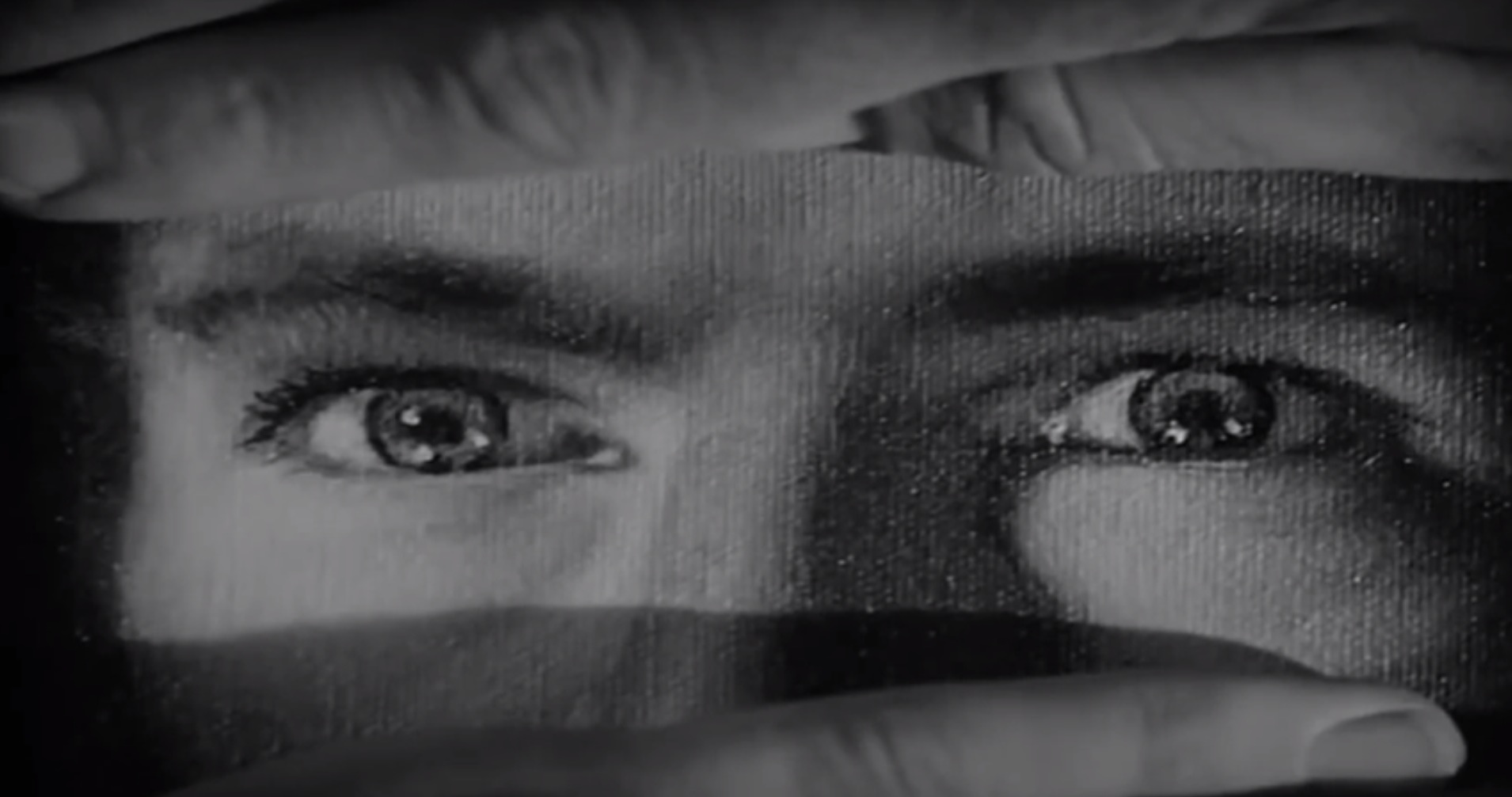 (Picture: youtube.com) Discovering the Eye of Sherlock Holmes |
What do we know about Sherlock Holmes’ relation to art? Well, the main source might be the Hound of the Baskervilles novel (http://en.wikipedia.org/wiki/The_Hound_of_the_Baskervilles) wherein Holmes is given opportunity to look at art. Most stagings of the original novel section do not bring out the irony of the scene, but it is worth looking at both: the respective chapter of the novel, and at assorted stagings, i.e. visualizations of that scene. Because what is rendered by Conan Doyle also presents film artists, and not the least actors, with a challenge. And what we do here is to visualize assorted interpretations by filmmakers of Holmes’ ›judgment by eye‹.
 |
Don’t read this if you don’t know yet the book and the final solution of the case, because this is about how Holmes is solving the Hound of the Baskervilles case: by using his ›judgment by eye‹ (Martin Kemp). Which allows him to see through all the mystery and to point at a suspect, who, more precise, is no longer a suspect, but identified and proven as guilty. And it is about portrait-likeness, not about Morellian detail, which is why at least this scene is not suitable to identify Holmes as a Morellian, although he does look at facial features and at minor detail. But what he discovers is family-likeness (in comparing a portrait and a suspect) and not the handwriting of a painter which had, as it were, overwritten portrait-likeness by externalizing his own signature style elements (even if committed to portrait-likeness and truthfulness to nature when doing a portrait). In brief: it is not a painter’s handwriting that Holmes is discovering here but nature’s handwriting, truthfully rendered (as Holmes seems to assume) by a painter, and as it were, continued by nature in having modelled, revealingly, the face of a suspect. But let us read now a longer excerpt of the original chapter Fixing the Nets (p. 203ff. of the 1902 edition):
 He [Holmes] stopped suddenly and stared fixedly up over my head into the air. The lamp beat upon his face, and so intent was it and so still that it might have been that of a clear-cut classical statue, a personification of alertness and expectation. »What is it?« we both [Watson and Sir Henry] cried. I could see as he looked down that he was repressing some internal emotion. His features were still composed, but his eyes shone with amused exaltation. »Excuse the admiration of a connoisseur,« said he, as he waved his hand towards the line of portraits which covered the opposite wall. »Watson won’t allow that I know anything of art, but that is mere jealousy, because our views upon the subject differ. Now, these are a really very fine series of portraits.« »Well, I’m glad to hear you say so,« said Sir Henry, glancing with some surprise at my friend. »I don't pretend to know much about these things, and I’d be a better judge of a horse or a steer than of a picture. I didn’t know that you found time for such things.« »I know what is good when I see it, and I see it now. That’s a Kneller (http://en.wikipedia.org/wiki/Godfrey_Kneller), I’ll swear, that lady in the blue silk over yonder, and the stout gentleman with the wig ought to be a Reynolds (http://en.wikipedia.org/wiki/Joshua_Reynolds). They are all family portraits, I presume?« »Every one.« »Do you know the names?« »Barrymore has been coaching me in them, and I think I can say my lessons fairly well.« »Who is the gentleman with the telescope?« »That is Rear-Admiral (http://en.wikipedia.org/wiki/Rear_admiral) Baskerville, who served under Rodney in the West Indies. The man with the blue coat and the roll of paper is Sir William Baskerville, who was Chairman of Committees of the House of Commons under Pitt.« »And this Cavalier opposite to me – the one with the black velvet and the lace?« »Ah, you have a right to know about him. That is the cause of all the mischief, the wicked Hugo, who started the Hound of the Baskervilles. We’re not likely to forget him.« I gazed with interest and some surprise upon the portrait. »Dear me!« said Holmes, »he seems a quiet, meek-mannered man enough, but I daresay that there was a lurking devil in his eyes. I had pictured him as a more robust and ruffianly person.« »There’s no doubt about the authenticity, for the name and the date, 1647, are on the back of the canvas.« Holmes said little more, but the picture of the old roysterer seemed to have a fascination for him, and his eyes were continually fixed upon it during supper. It was not until later, when Sir Henry had gone to his room, that I was able to follow the trend of his thoughts. He led me back into the banqueting-hall, his bedroom candle in his hand, and he held it up against the time-stained portrait on the wall. »Do you see anything there?« I looked at the broad plumed hat, the curling love-locks, the white lace collar, and the straight, severe face which was framed between them. It was not a brutal countenance, but it was prim, hard, and stern, with a firm-set, thin-lipped mouth, and a coldly intolerant eye.« »Is it like anyone you know?« »There is something of Sir Henry about the jaw.« »Just a suggestion, perhaps. But wait an instant!« He stood upon a chair, and holding up the light in his left hand he curved his right arm over the broad hat and round the long ringlets. »Good heavens!« I cried, in amazement. The face of Stapleton had sprung out of the canvas. »Ha, you see it now. My eyes have been trained to examine faces and not their trimmings. It is the first quality of a criminal investigator that he should see through a disguise.« »But this is marvellous. It might be his portrait.« »Yes, it is an interesting instance of a throwback, which appears to be both physical and spiritual. A study of family portraits is enough to convert a man to the doctrine of reincarnation. The fellow is a Baskerville – that is evident.« »With designs upon the succession.« »Exactly. This chance of the picture has supplied us with one of our most obvious missing links. We have him, Watson, we have him, and I dare swear that before tomorrow night he will be fluttering in our net as helpless as one of his own butterflies. A pin, a cork, and a cord, and we add him to the Baker Street collection!« He burst into one of his rare fits of laughter as he turned away from the picture. I have not heard him laugh often, and it has always boded ill to somebody. |
| MICROSTORY OF ART ONLINE JOURNAL FOR ART, CONNOISSEURSHIP AND CULTURAL JOURNALISM ONE) We begin with the classic 1939 production with Basil Rathbone as Sherlock Holmes (http://en.wikipedia.org/wiki/The_Hound_of_the_Baskervilles_%281939_film%29) and, as we will see, this production has a remarkable sequence of Sherlock Holmes demonstrating who is suspect, respectively guilty, remarkable for its visual clarity and stringency. A sequence that would probably work, although the movie is not a silent movie, by pictures alone. At least for the informed viewer. And we will show the sequence, in stills, below, and, if one likes so, as a repetition of what we already have learned. But there is something else that has to be said before: As it is well known the reader of the Sherlock Holmes stories and novels is not actually investigating with Sherlock Holmes. Which means: We, as readers, are not given all the informations that the investigating detective has at a certain moment in time, and often we are only confronted with the reasoning of Sherlock Holmes, if the latter finally reveals the course of his investigating. I.e.: in retrospect. But here, since it is about the ›reading‹ of pictures, we actually might have a chance to investigate, not exactly with Holmes (who is, though he is using all kinds of aids, the Baker Street boys for example, or also animals, rather in the habit of working alone), but with the film. And this in case the film would be showing us the pictures that finally inspire the hypothesis that Holmes builts his reasoning upon. Let’s take a look at the moment when Holmes supposedly has his initial intuition. 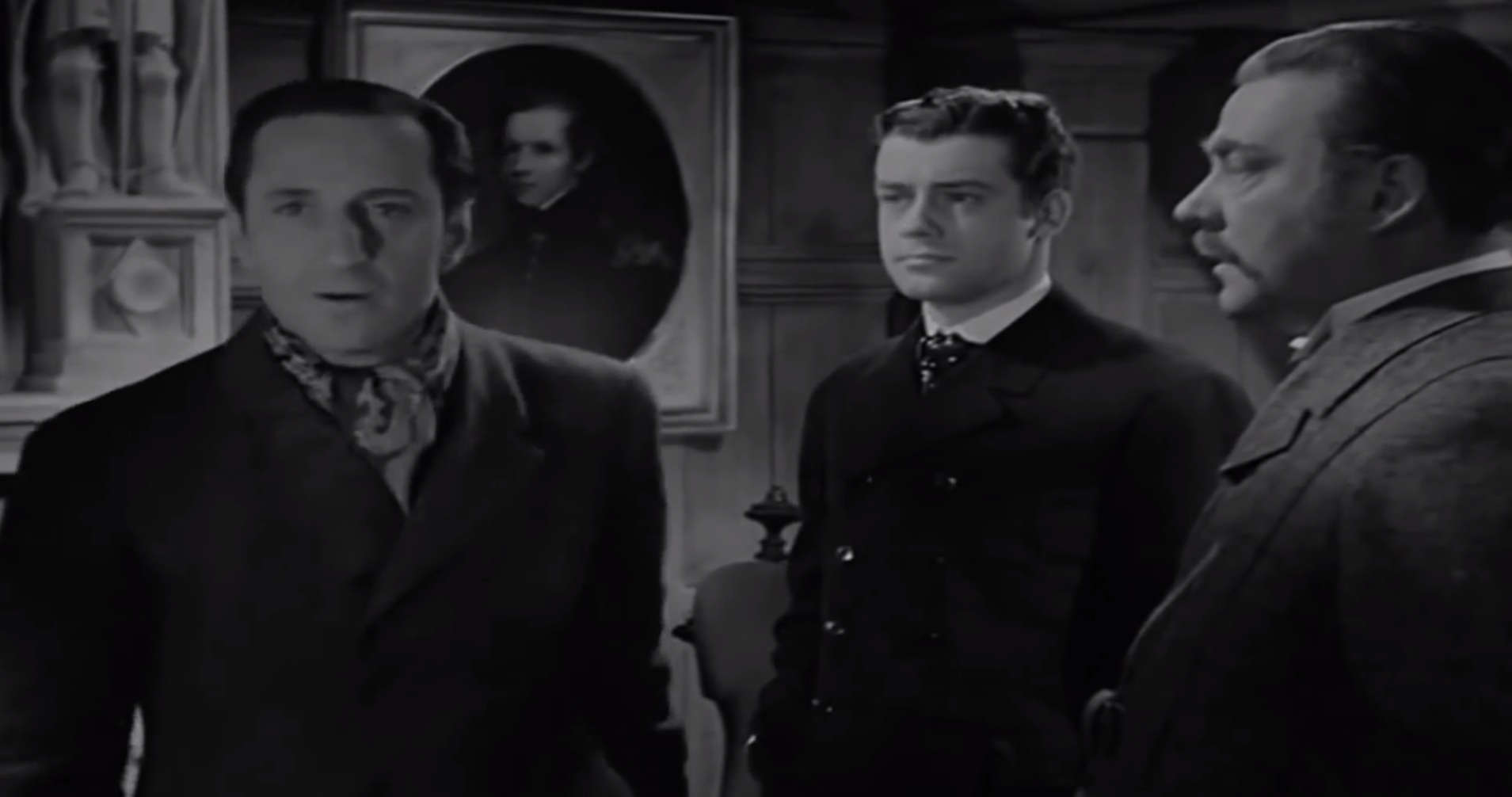 (all subsequent stills: youtube.com) And what intuition is that? It is the intuition that there might be ›a wicked Baskerville‹ around, who is causing all the trouble with the hound; and in case we would know how a wicked Baskerville would look like, we might even be able to identify ›the wicked Baskerville‹. And this is exactly, at least in theory, the information that a film might give us, even long before Holmes has this initial intuition that works as the basis of a hypothetical construction of how the case might be solved. Solved on the basis of ›judgment by eye‹ plus the construction of a hypothetical scenario that someone with a fake name around is actually a wicked Baskerville and could be identified as such by comparing his features with the features of the Hugo portrait (that Holmes, above, is just looking at; and one might also take Holmes by the word, saying that he was solving the case only by »chance«, which is, by discovering accidentally a likeness between the Hugo portrait and Stapleton, of which the portrait simply reminded him, upon which the hypothetical construction to explain the likeness only followed; in sum: the portrait itself, as it were, did actually and literally solve the case, by thus reminding him). I have not checked the film for its potential earlier showing of the Hugo portrait (to give us a slight chance…), but the point is that of course the novel is not capable (or not willing) to give any opportunity to the reader to show his skills of ›reading‹ pictures, and thus to investigate with Holmes or at least: with the novel. |
And now the final – visual – demonstration of how the case is solved (and since we already know how, it is a repetition): 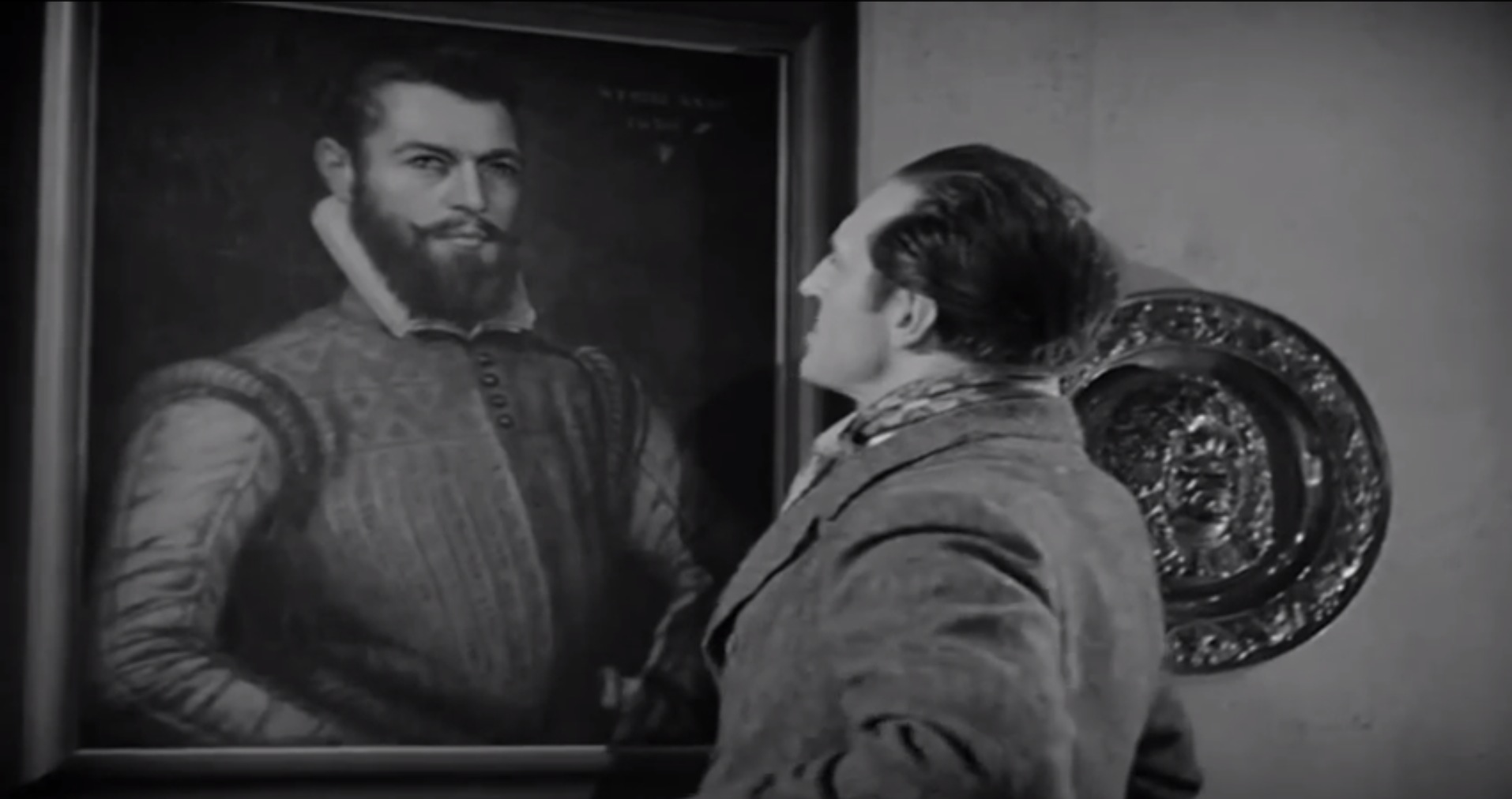 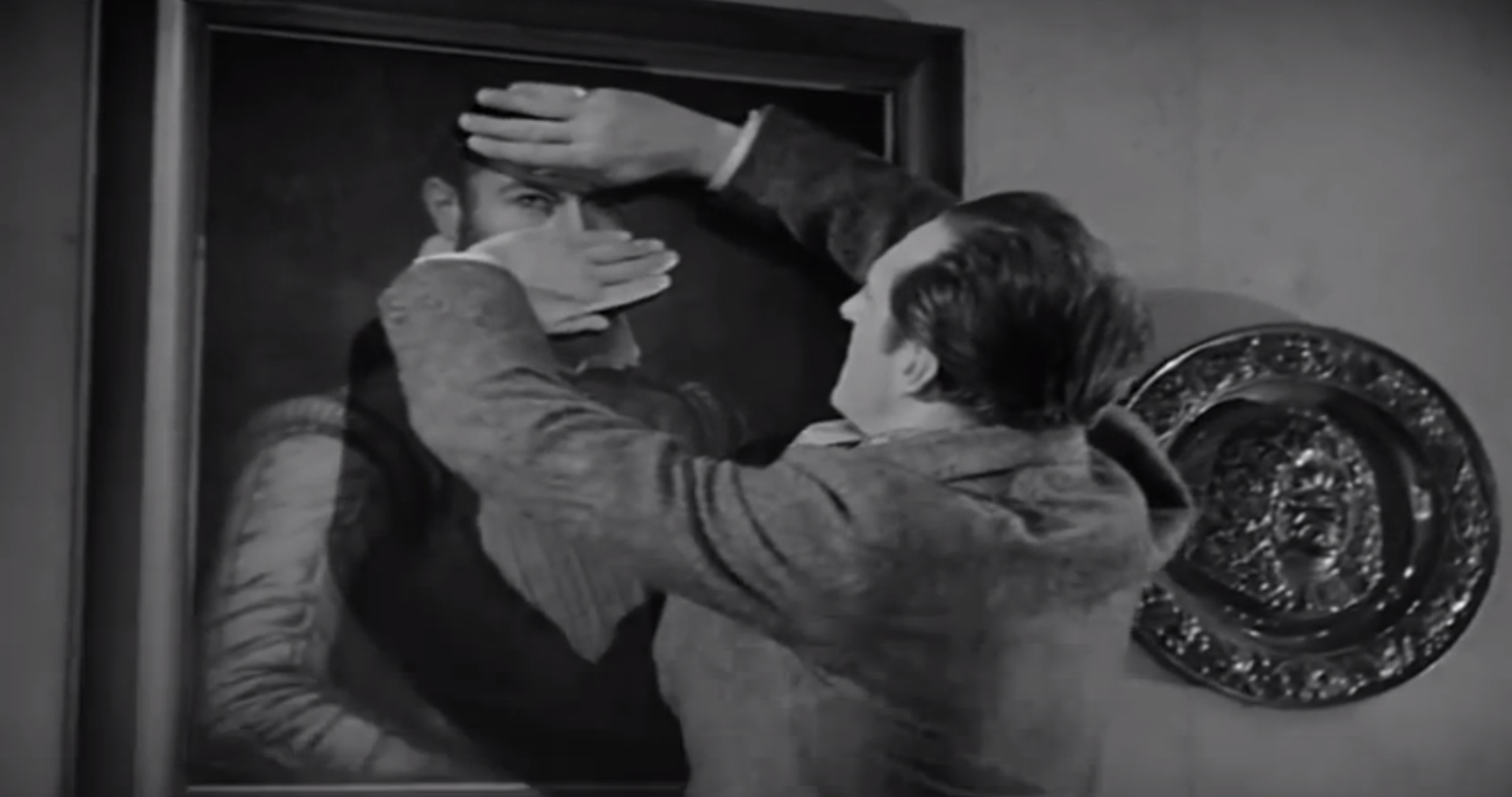  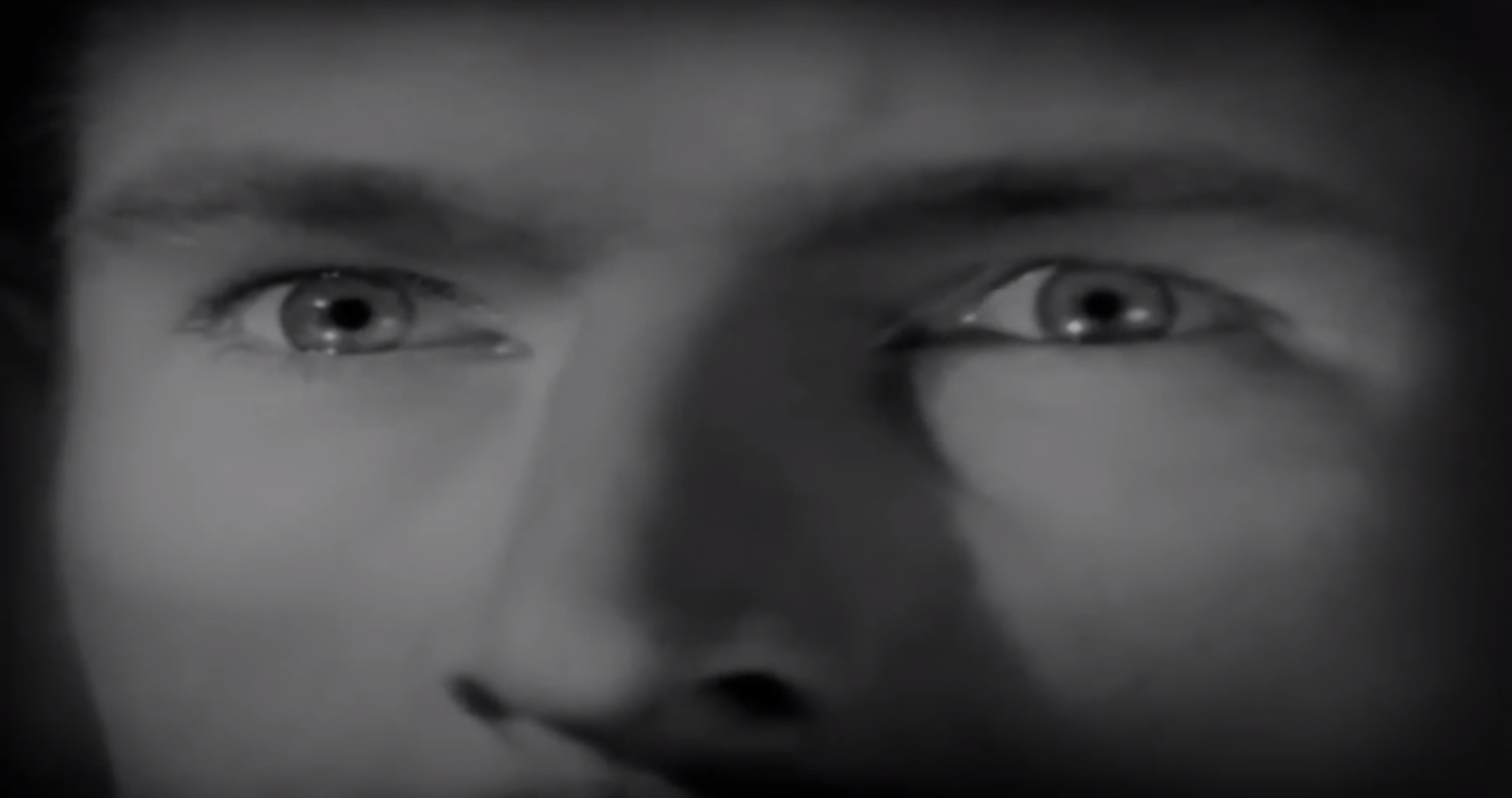 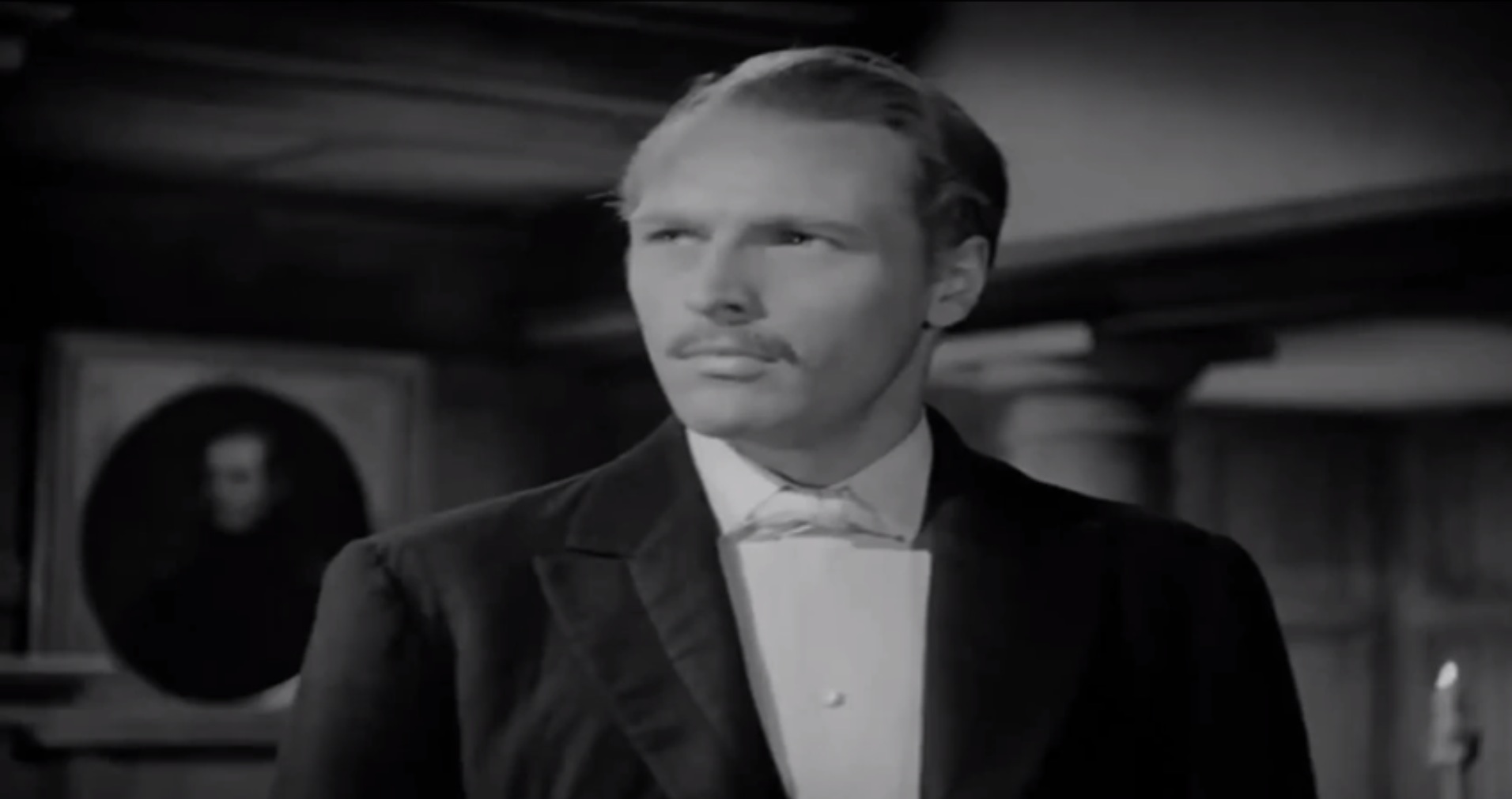 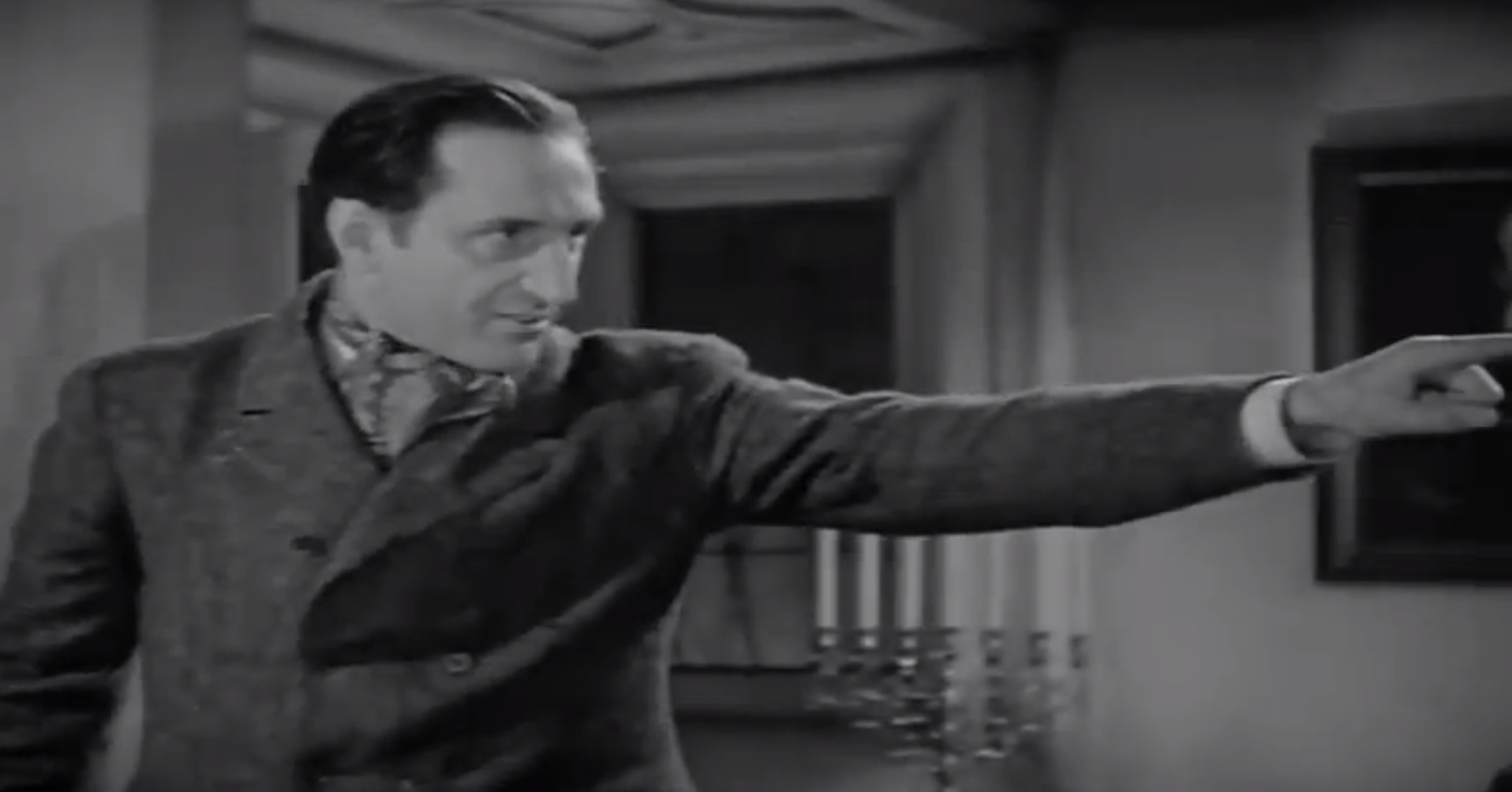 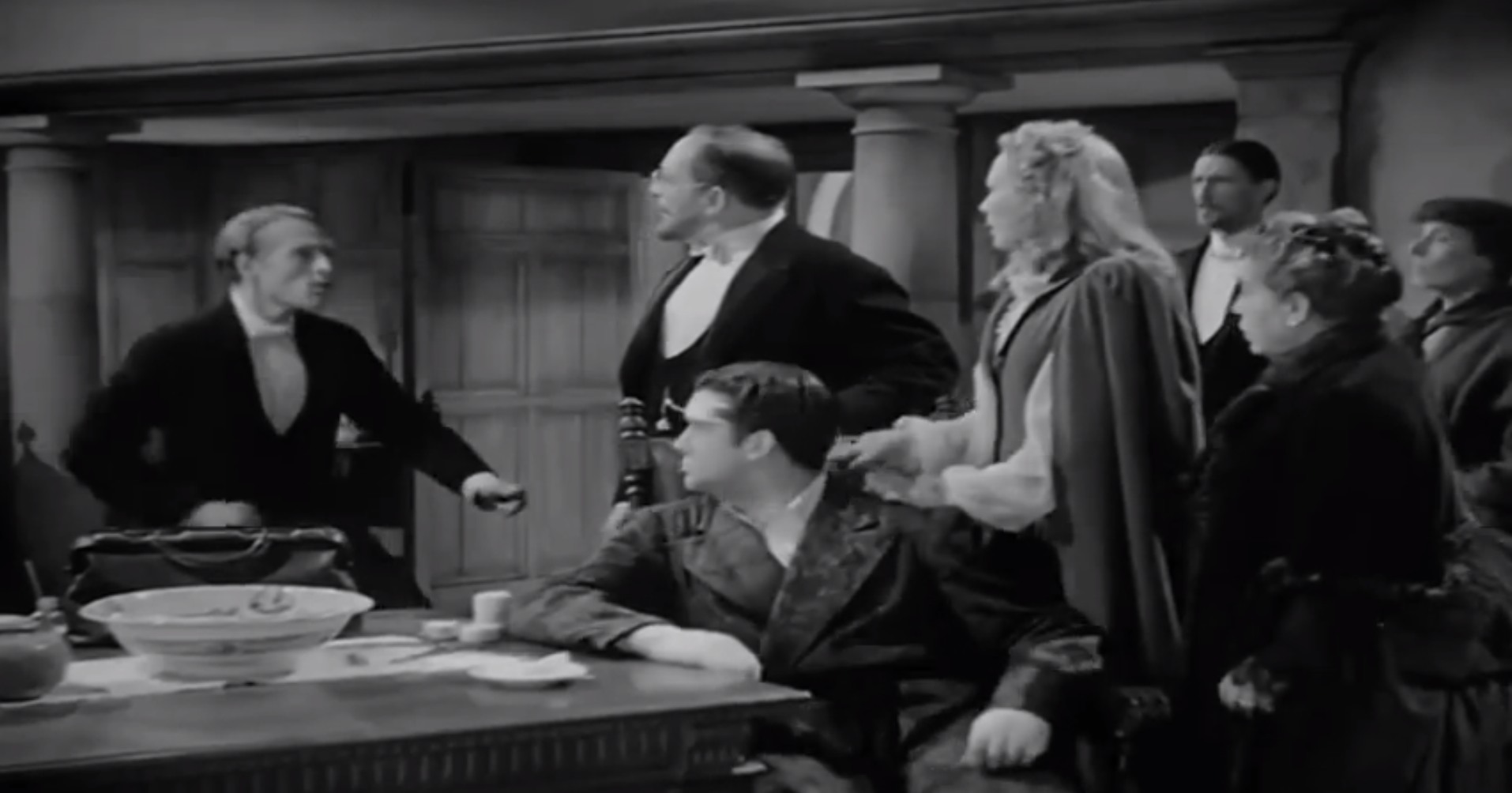 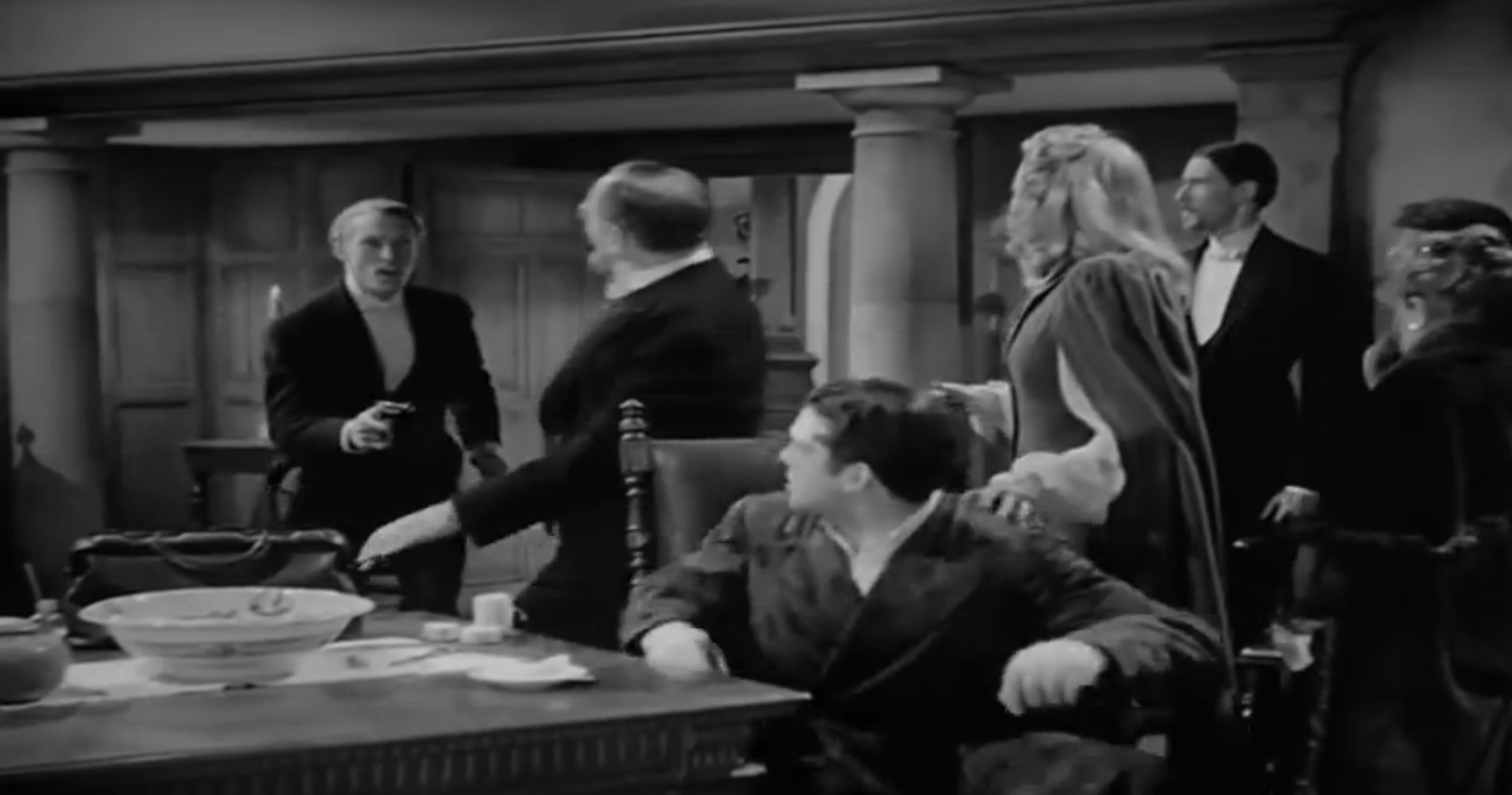 |
| MICROSTORY OF ART ONLINE JOURNAL FOR ART, CONNOISSEURSHIP AND CULTURAL JOURNALISM TWO) A 1983 animated version has Stapleton and the portrait in one and the same frame (and Holmes’ eyeballs, here not shown, shifting between the two, which is probably: the two jaws). 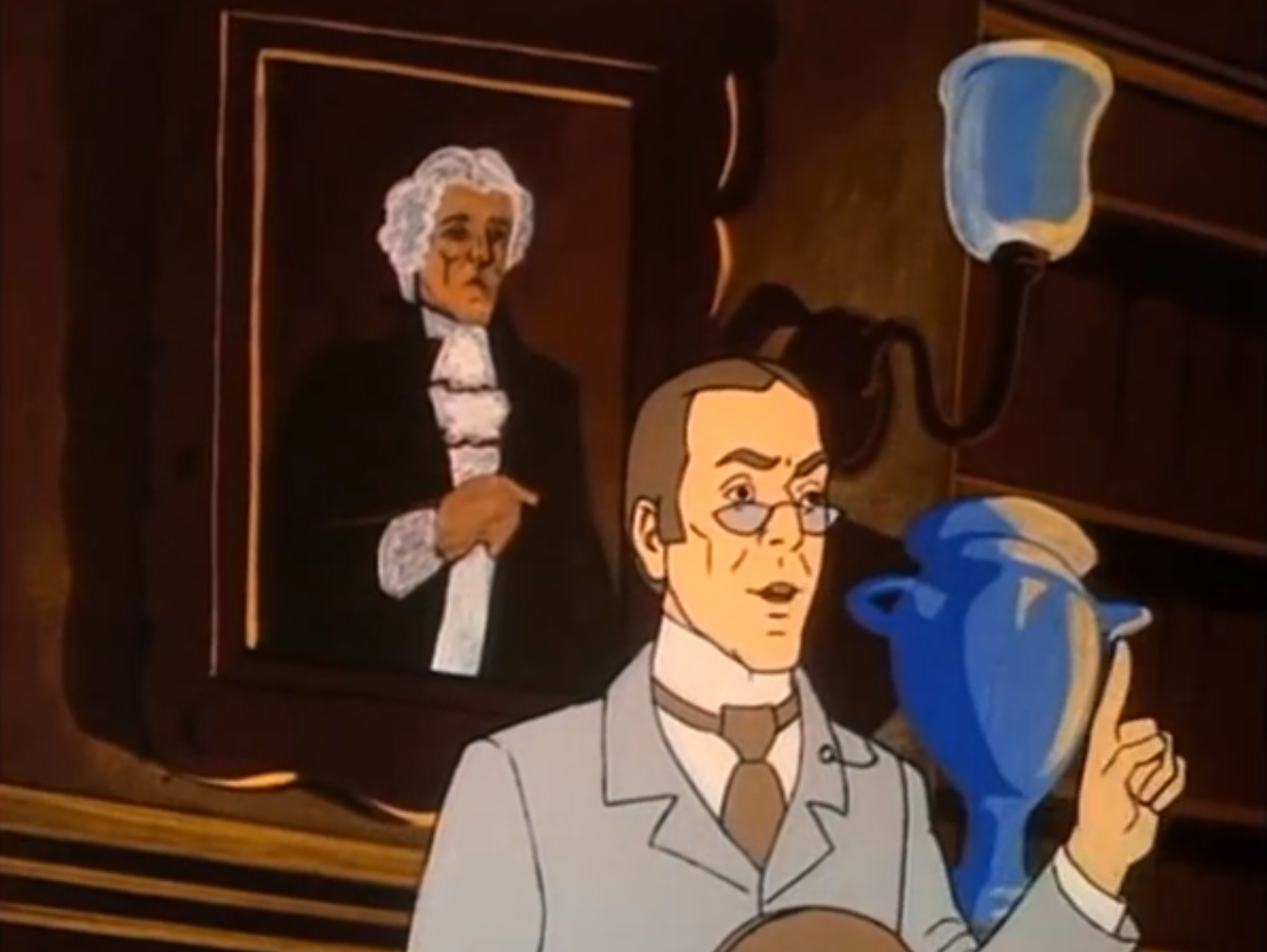 |
| MICROSTORY OF ART ONLINE JOURNAL FOR ART, CONNOISSEURSHIP AND CULTURAL JOURNALISM THREE) And finally: The 1988 Granada TV version (http://en.wikipedia.org/wiki/Sherlock_Holmes_%281984_TV_series%29) has a more rugged Holmes (Jeremy Brett)… 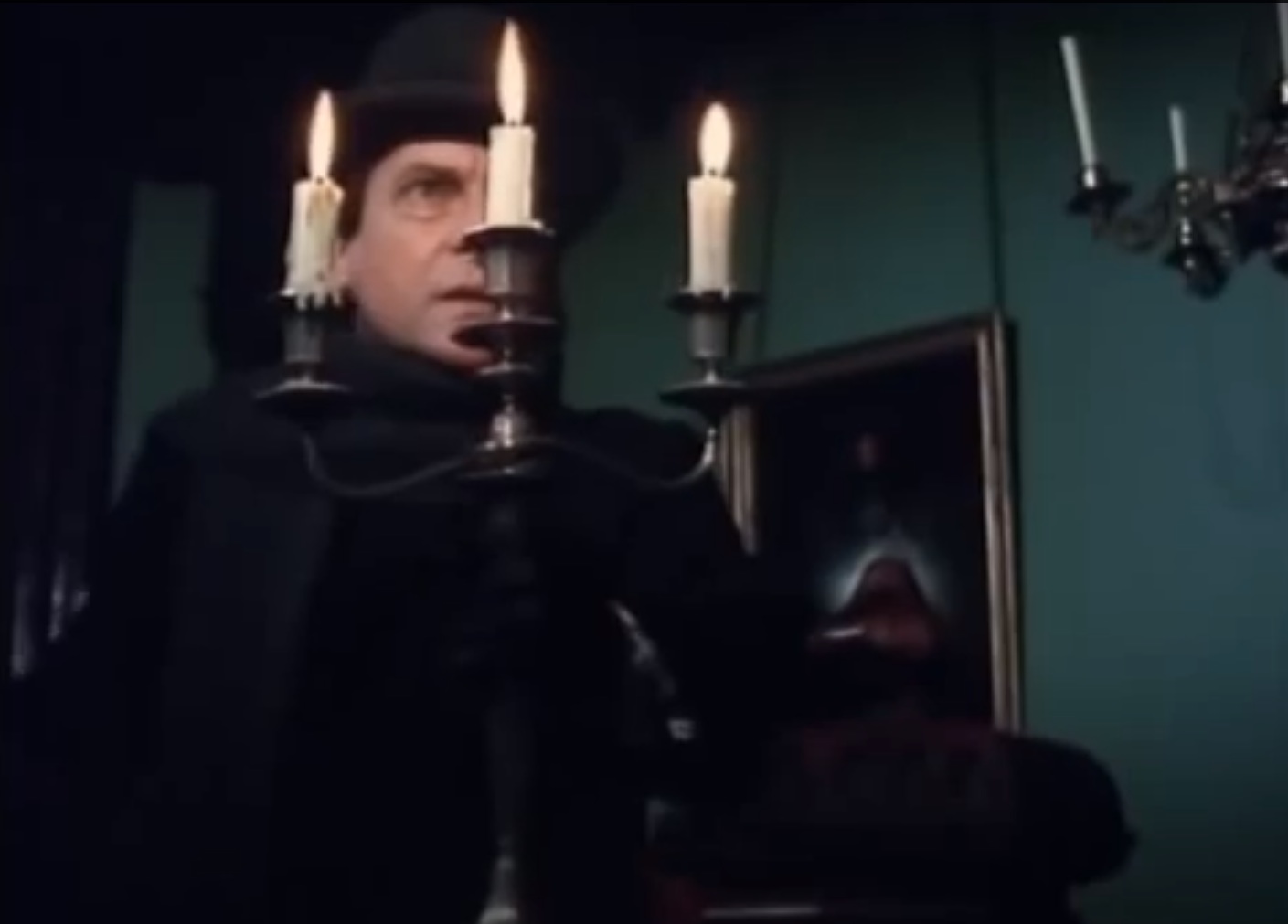 …a nicely done wicked portrait… 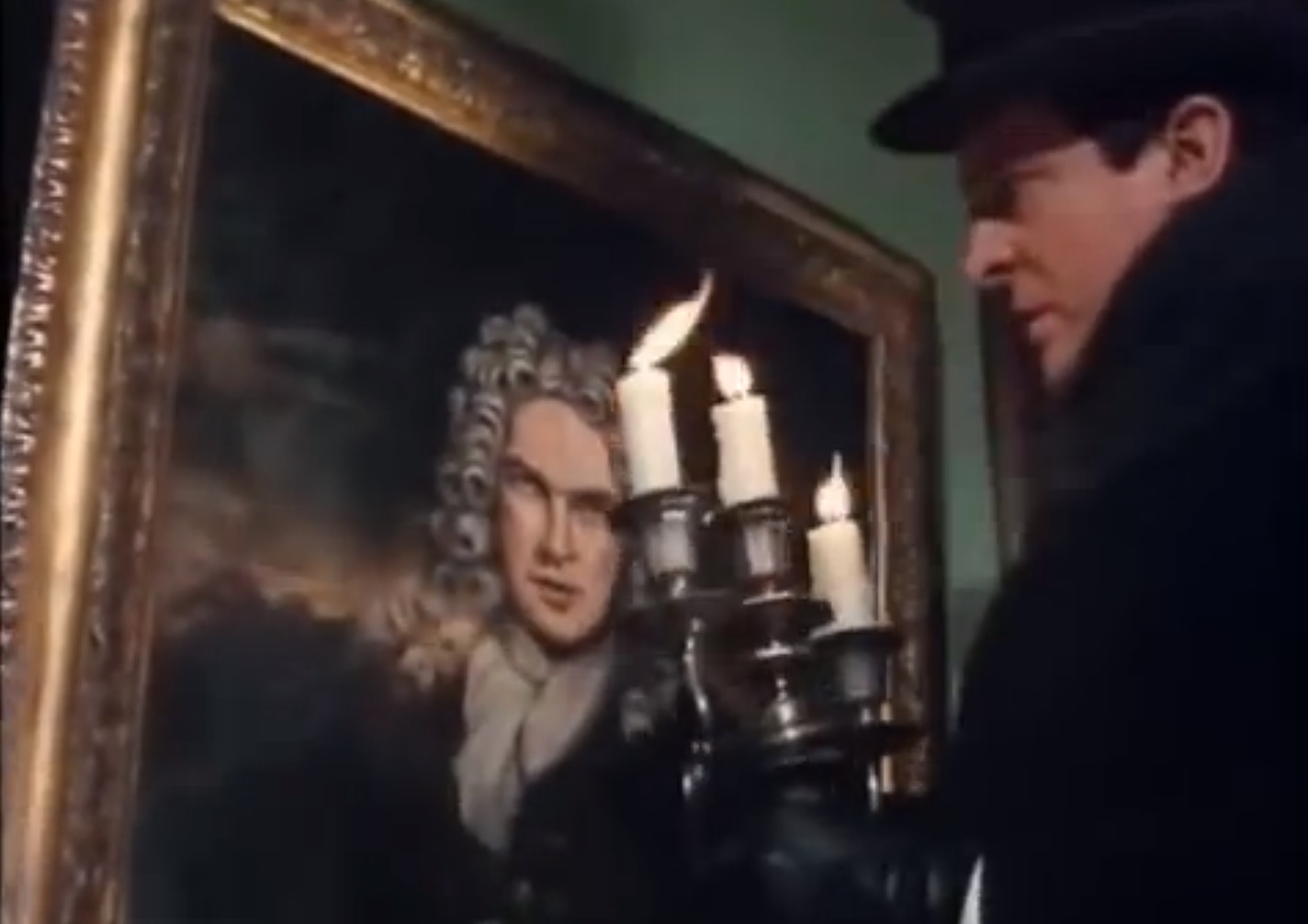 …a connoisseur who is even leaning upon it… 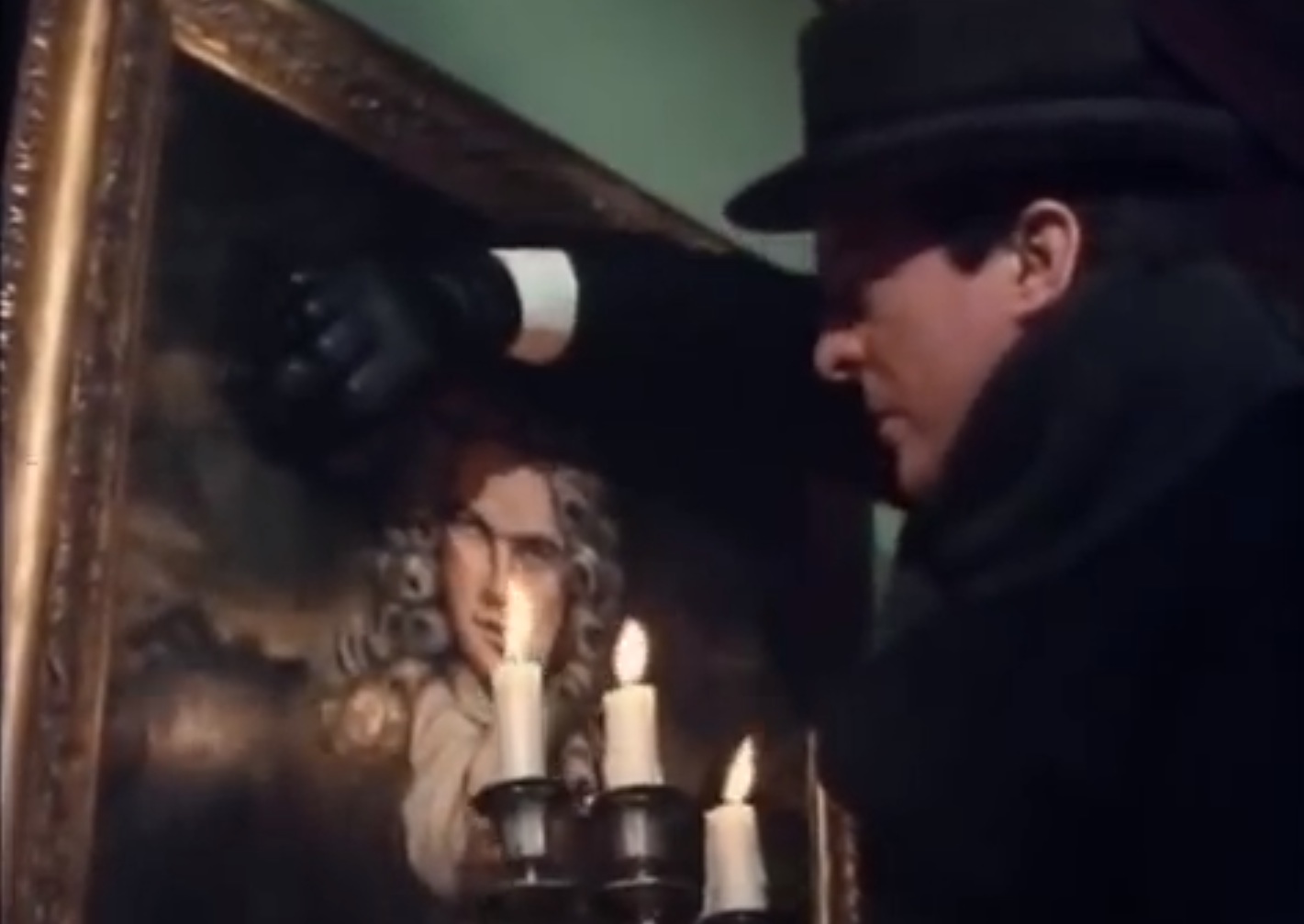 …and also visual clarity, stringency and irony (when Holmes is anticipatingly arrests Stapleton in effigie): 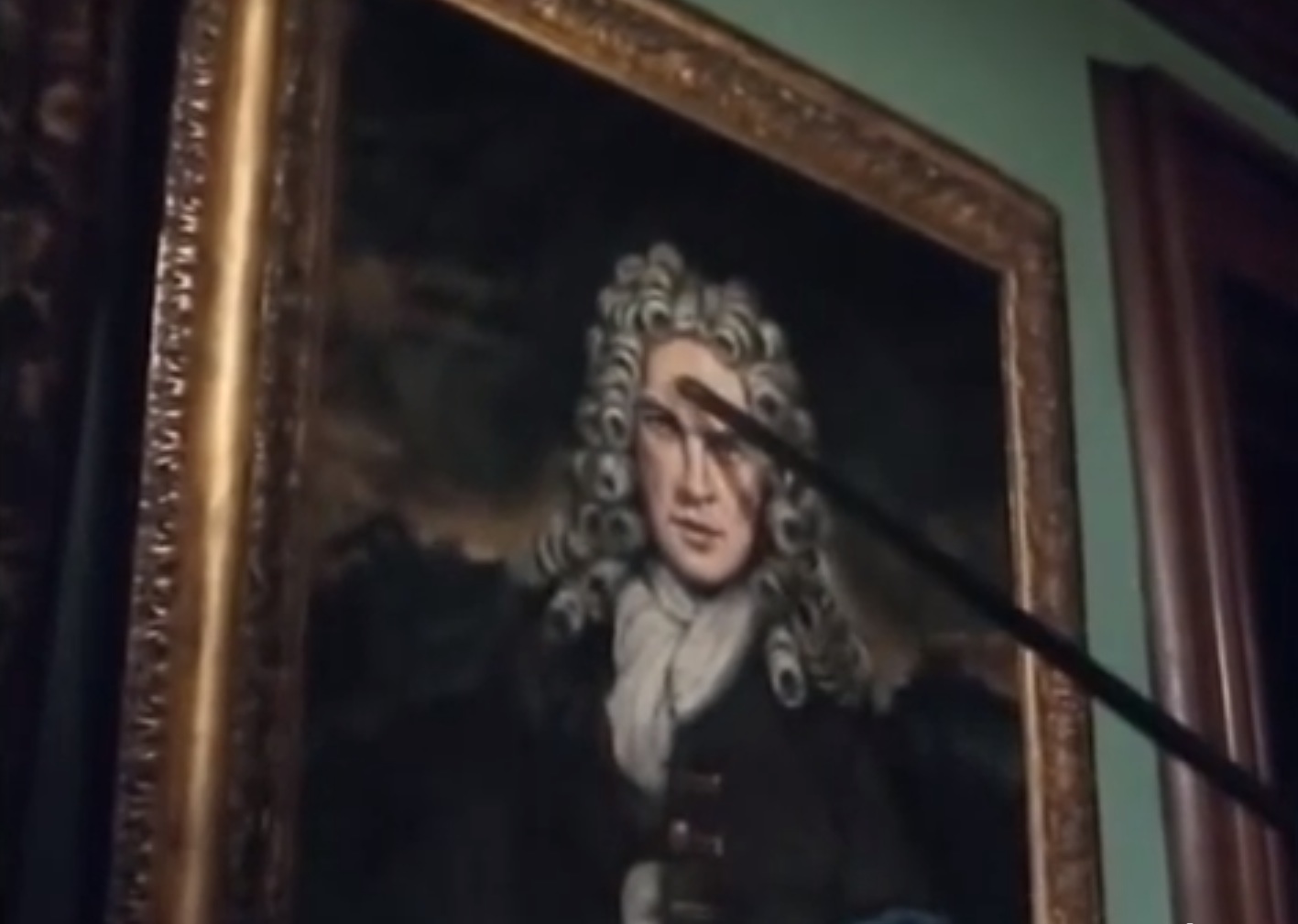 |
MICROSTORY OF ART
ONLINE JOURNAL FOR ART, CONNOISSEURSHIP AND CULTURAL JOURNALISM
HOME
© DS